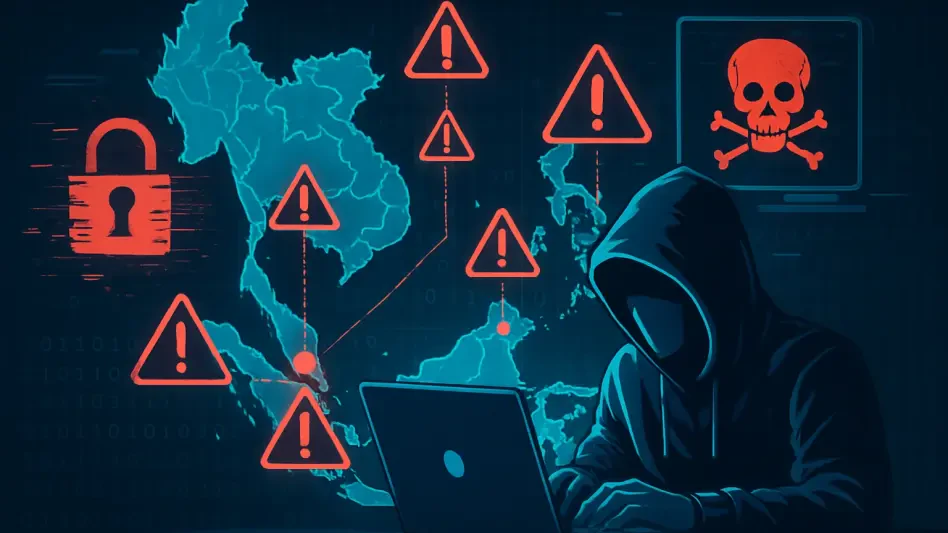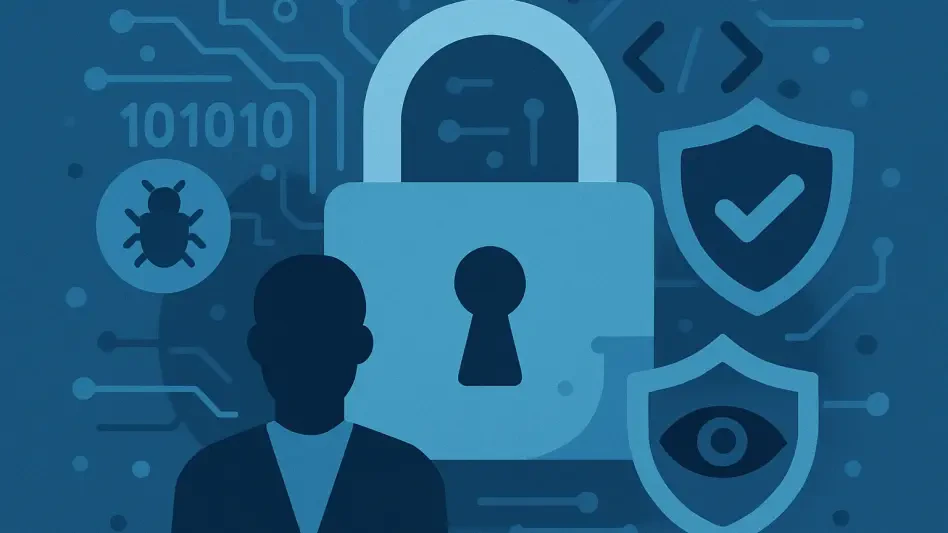The notorious Russia-based hacking entity Sandworm has been linked to ongoing global cyber-attacks spanning across more than 15 countries. Known for its state-sponsored cyber offensive activities, a subgroup within Sandworm is involved in a multi-year initial access operation termed BadPilot, targeting a wide range of entities and infrastructure around the globe.
Broad Geographical Reach and Targets
Expanding Global Footprint
Sandworm’s operations are characterized by a wide geographical span, hitting targets in North America, various European countries, Asia, Africa, and Australia. Countries affected include Angola, Argentina, Australia, China, Egypt, India, Kazakhstan, Myanmar, Nigeria, Pakistan, Turkey, and Uzbekistan. This broad reach signifies a strategic expansion beyond their initial focus areas. Hacking campaigns that once were limited to Eastern Europe have now spread to key business and governmental sites across multiple continents.
This extension of their operational boundaries is more than just a geographical shift; it represents Sandworm’s ambition to influence and disrupt global entities beyond their backyard. The group’s ability to penetrate diverse geopolitical arenas demonstrates a sophisticated understanding of global networked systems, as well as an adeptness in navigating international cybersecurity landscapes. Integrating new regions into their target list presents new challenges for the affected countries, especially in terms of tailoring their defensive frameworks to mitigate this rising tide of cyber incursions.
Diverse Target Sectors
The subgroup’s targets encompass several critical sectors, such as energy, gas, telecommunications, shipping, arms manufacturing, and international governments. By targeting these sectors, Sandworm aims to disrupt essential services and infrastructure, causing widespread impact and instability. The sectors chosen by Sandworm represent the backbone of modern society, where even brief disruptions can lead to significant ripple effects across diverse systems. Access to such critical infrastructures can serve as leverage points in geopolitical conflicts, providing hackers with both intelligence and coercive power.
With energy and telecommunications being the lifeblood of advanced economies, the potential to cause prolonged outages or severe disruptions speaks to the meticulous selection process by Sandworm. In addition, targeting arms manufacturing and international governments forms part of their strategy to undermine national security and weaken defense capabilities. This points to a form of cyber warfare where the ultimate goal is not just financial gain, but to inflict political and economic damage, indirectly asserting influence on a global scale. These activities showcase a calculated effort to undermine global stability and shake confidence in secure operations across vital sectors.
Expansion and Evolution
From Eastern Europe to Global Operations
Sandworm, also known as Seashell Blizzard, has shown a significant expansion in its victimology footprint over the last three years. Initially focusing on Eastern Europe, especially Ukraine, their operations have now extended to the United States, Europe, Central Asia, and the Middle East. This shift reflects an adaptive strategy to meet broader geopolitical goals. As cyber operations evolve, Sandworm’s reach mirrors the changing contours of global politics, where the digital frontier becomes an arena for influence and conflict.
The pivot from a regional actor concentrated in Eastern Europe to a global threat highlights how cyber warfare can be dynamically scaled and repurposed. The expansion brought about novel challenges for security agencies worldwide, as attacks that were once region-specific have now become a transnational phenomenon. This spreading infection of cyber threats forces global defensive bodies to rethink and expand their protective measures. It is a testament to the interconnectedness of cyber defense strategies and the difficulty in containing state-sponsored cyber aggression within geographical boundaries.
Alignment with Geopolitical Strategies
The hack group’s objectives align with Russian geopolitical strategies, particularly relating to the Russo-Ukrainian war. Targets include entities providing material support to Ukraine or holding geopolitical importance. This alignment underscores the group’s role in advancing state-sponsored agendas through cyber warfare. Such alignment points to a larger playbook where cyber tactics are seamlessly integrated with traditional forms of statecraft, blending espionage, subversion, and direct assaults to achieve geopolitical ends.
In focusing on entities associated with the conflict, Sandworm leverages its cyber capabilities to indirectly influence the battlefield. By compromising systems that offer material or strategic support to Ukraine, they execute a form of warfare that operates under the radar, bypassing conventional military engagements. This strategy complicates defensive measures for those offering aid, as they must now contend with both physical and digital threats. It amplifies the battlefield beyond its physical confines, making every alliance and resource a potential digital casualty in the larger war effort.
Adversarial Tactics and Tools
Microsoft and other cybersecurity entities like Google’s Mandiant describe Sandworm as “operationally mature,” capable of sophisticated espionage, attack, and influence operations. Their tactics include the use of data wipers (KillDisk), pseudo-ransomware (Prestige), backdoors (Kapeka), and off-the-shelf malware like DarkCrystal RAT, enabling persistent remote access to compromised systems. Each tool in their arsenal signifies a curated blend of offensive capabilities designed for specific objectives, varying from simple network disruption to complex data exfiltration operations.
These cyber tools are not just random selections; they reflect high-level strategic planning and an understanding of different attack vectors. Data wipers like KillDisk are designed to create chaos and obliterate data, making recovery efforts difficult for targeted organizations. Pseudo-ransomware serves a dual purpose of financial extortion and disguising the true motives of attacks. The use of backdoors such as Kapeka and remote access trojans like DarkCrystal RAT ensures long-term access and control over compromised systems, facilitating ongoing surveillance and command execution. This multifaceted approach allows Sandworm to tailor their attacks with precision and to sustain their cyber campaigns over extended periods.
Leveraging Criminal Sources
The group also leverages criminal sources for tools and infrastructure, enhancing their cyber offensive capabilities with tools sourced from the cybercriminal underground. This includes malware like Warzone and RADTHIEF, which are readily available and can be quickly integrated into their operations. By tapping into the cybercrime ecosystem, Sandworm amplifies its arsenal and blurs the lines between state-sponsored and criminal activities, making attribution a complex task for cybersecurity experts.
Utilizing off-the-shelf malware obtained from criminal marketplaces not only expedites their capabilities but also provides plausible deniability. The symbiotic relationship with cybercriminals enriches Sandworm’s toolset without needing extensive R&D efforts, allowing them to stay agile and ahead of defensive measures. This partnership reflects a pragmatic approach where state-sponsored hackers harness the vigor and innovation of the cybercriminal world to enhance their offensive strategies. Consequently, this fusion of state and criminal resources represents a formidable challenge to global cybersecurity frameworks, necessitating a coordinated and sophisticated defense strategy.
Techniques for Initial Access and Persistence
Exploiting Known Vulnerabilities
The subgroup has exploited known vulnerabilities in various software to gain initial access. Examples include ConnectWise ScreenConnect (CVE-2024-1709) and Fortinet FortiClient EMS (CVE-2023-48788). These vulnerabilities provide entry points into targeted systems, allowing the group to establish a foothold. By systematically exploiting such weaknesses, Sandworm infiltrates their target networks with a level of precision that showcases their deep understanding of software infrastructures.
Exploiting known vulnerabilities is a tactical choice that leverages the inherent delay between the discovery of a vulnerability and the implementation of a patch. This window of opportunity is systematically exploited by hackers to breach defenses swiftly and effectively. Once initial access is obtained, it sets off a chain of post-exploitation actions, allowing them to navigate deeper into the network and establish control, effectively weaponizing each vulnerability against its victim.
Maintaining Persistence
Post-exploitation actions observed involve credential collection, command execution, and lateral movement within compromised networks. Methods for maintaining persistence include deploying remote access software (Atera Agent, Splashtop Remote Services), using web shells (LocalOlive), and making malicious modifications to Outlook Web Access pages. These techniques ensure long-term access and control over infected systems. The persistent presence facilitated by these methods provides Sandworm with sustained access to compromised networks, turning temporary breaches into enduring footholds.
Credential collection and lateral movement enable the group to navigate deeper into systems and access higher-value data and control systems. Remote access software like Atera Agent and Splashtop Remote Services allow for continued surveillance and manipulation of infected systems. Web shells grant command control, while alterations to Outlook Web Access serve as backdoors through which the hackers can re-enter if their other methods are detected and neutralized. This multi-layered persistence strategy guarantees that Sandworm can maintain its presence across various network defenses, posing a significant challenge for cybersecurity professionals trying to root them out.
Methodologies and Campaign Patterns
Broad and Targeted Intrusions
Attacks by this subgroup feature both broad “spray and pray” methods and targeted intrusions. This dual approach allows them to maintain access and perform network reconnaissance or data exfiltration across numerous systems simultaneously. The ability to compromise multiple sectors and geographical areas enhances their operational scale and impact. The “spray and pray” tactics scatter cyber-attacks across a wide range of potential entry points, increasing the likelihood of successful breaches, while targeted intrusions focus on high-value targets with meticulous precision.
By combining broad attacks with specific, targeted efforts, Sandworm ensures they maximize their chances of successful infiltration. The indiscriminate nature of broad-based attacks overwhelms defenses and can serve as a distraction, while more concentrated efforts focus on gaining access to critical assets and sensitive information. This blend of strategies allows the group to cast a wide net while also maintaining sharp focus on strategic objectives, effectively balancing breadth and depth in their cyber operations.
Structured Approach to Cyber Operations
In the evolving landscape of cybersecurity, adopting a structured approach to cyber operations is paramount for organizations to safeguard their digital assets against an ever-increasing array of threats. This methodology involves a comprehensive framework encompassing threat identification, prevention, detection, and response, ensuring a fortified defense mechanism against potential cyberattacks.
The subgroup’s operations reveal a structured approach to maintaining access and control. Their methods include legitimate remote access software, web shells for command control, and modifications to existing sign-in interfaces for real-time data harvesting. This structured methodology reflects a high degree of operational maturity and strategic planning. Each tactic is meticulously chosen to sustain access continuously, highlighting the sophistication and planning inherent in Sandworm’s operations.
Utilizing legitimate software for remote access provides a cloak of legitimacy to their activities, making detection more challenging. Web shells offer a covert channel for command control, allowing sustained manipulation of compromised systems. Meanwhile, altering sign-in interfaces gathers real-time authentication data, which can then be utilized for deeper penetration and exploitation. This structured and methodical approach underscores the advanced capabilities of Sandworm, positioning them as a formidable adversary in the cyber threat landscape.
Overarching Trends and Observations
Increasing Global Reach
The evolution from a focus on Eastern Europe to a more global reach reflects an adaptive strategy, enabling Russia to meet broader geopolitical goals. This transition demonstrates how cyber warfare groups can dynamically alter their reach and impact based on shifting strategic objectives. Sandworm’s ability to recalibrate its focus highlights the intrinsic flexibility and responsiveness of state-sponsored cyber operations, which can pivot rapidly to address new targets and objectives.
This expanding geographic reach reveals a multifaceted threat that transcends regional borders, posing a global challenge that requires a more unified and collaborative international response. It disrupts conventional approaches to cybersecurity, compelling nations to adopt more sophisticated and cooperative defensive measures. As Sandworm extends its reach, it signals the inevitability of a more interlinked and sophisticated cyber defense paradigm, tailored to meet the demands of an increasingly interconnected threat landscape.
Use of Mixed-Source Tools
The reliance on weaponized vulnerabilities and off-the-shelf malware indicates a blend of sophisticated custom-built tools and readily available malicious software. This mix makes attribution more challenging and expands operational capabilities on short notice. The hybrid approach reflects a pragmatic and resourceful strategy that marries the bespoke with the commoditized, creating a versatile and adaptable toolkit for diverse cyber operations.
This convergence of sophisticated and easily accessible tools allows Sandworm to remain flexible and responsive. Utilizing off-the-shelf malware reduces development time, enabling rapid deployment and adaptation. Meanwhile, custom-built tools provide targeted capabilities that are hard to counteract. This mixture complicates the attribution process for cybersecurity experts, as the blend of generic and unique tools can obscure the true source of an attack. Consequently, Sandworm’s strategy of integrating mixed-source tools amplifies their offensive capabilities and poses significant challenges for defensive efforts.
Persistent Threat Tactics
Three primary persistence methods reveal a structured approach to maintaining access and control over infected systems. These methods include legitimate remote access software, web shells for command control, and modifications to existing sign-in interfaces for real-time data harvesting. This approach not only ensures continued access but also grants the attackers the ability to monitor and manipulate the system over extended periods.
Remote access software blends into the routine software environment, reducing the risk of detection. Web shells provide hidden backdoors that can be used as needed to re-establish control if primary access points are neutralized. Modifying sign-in interfaces allows for the continual collection of crucial authentication credentials, enabling further penetrations and ensuring the attackers maintain an enduring presence. This structured and multi-layered persistence strategy illustrates the sophisticated approach of Sandworm in preserving their foothold within compromised networks, posing a relentless threat to the cybersecurity landscape.
Impact on Critical Infrastructure
The targeting of sensitive sectors like energy and telecommunications aligns with aims to disrupt critical infrastructure. This long-term strategic disruption model is particularly aimed at nations supporting Ukraine, emphasizing the group’s role in advancing state-sponsored agendas. By undermining essential services, Sandworm seeks to create widespread instability and exert pressure on geopolitical adversaries indirectly.
Disrupting critical infrastructure has far-reaching implications beyond the immediate impact on the targeted entity. It can trigger cascading effects on national security, economic stability, and public morale. Energy and telecommunications disruptions, for example, can paralyze essential services, hamper emergency responses, and destabilize public trust in governmental capabilities. Sandworm’s focus on such vital sectors underscores their strategic intent to weaken their adversaries systematically, leveraging cyber warfare as a means to exert power and influence across the global stage.
Cybercrime Symbiosis
The notorious Russia-based hacking group known as Sandworm has been connected to a series of ongoing global cyber-attacks that have reached over 15 countries. This group, recognized for its state-sponsored cyber offensive activities, has been a significant player in the landscape of international cybersecurity threats.
A particularly insidious subgroup within Sandworm is engaged in a long-term operation called BadPilot. This multi-year initial access campaign is designed to infiltrate a wide range of entities and critical infrastructure worldwide. The operation involves sophisticated strategies to penetrate security defenses, making it difficult for organizations to detect and mitigate the threats posed by this campaign.
Historically, Sandworm has been implicated in several high-profile cyber-attacks, including disruptive actions against Ukraine’s power grid and the NotPetya ransomware attack, which caused widespread devastation to businesses globally. The group’s methods are continually evolving, indicating a high level of sophistication and access to substantial resources, likely supported by the Russian state apparatus.
As cybersecurity becomes more critical in protecting national security and economic stability, understanding and countering the threats posed by entities like Sandworm and their operations such as BadPilot becomes imperative. Collaboration among international cybersecurity agencies and organizations is essential to combat these persistent and sophisticated threats.







